Thoughts From My First Rice Harvest
Harvest is a time to practice gratitude
Thank you for your patience as I find my way back to this newsletter after an unexpected, but deeply necessary, writing rest. Returning here feels like coming home, a small but meaningful space where I can share and connect. I’m filled with gratitude and excitement to be present again.
Autumn is a season that embodies abundance and loss, a fleeting beauty intertwined with decay. It holds moments of longing that are softened by the act of letting go. The natural world, in its wisdom, mirrors this balance — its vibrant colours and transformations offering solace. It’s as if nature reminds us that beauty and change coexist, that even in the ache of loss, there’s something tender and profound to hold onto.
At the end of September, just before the arrival of autumn, a large typhoon swept past Kamikatsu. Though everyone in the village was safe, the heavy rains and powerful winds created some damage — trees and debris cascaded down the mountainsides, blocking roads, and power outages. According to many locals, it was one of the strongest typhoons to hit the area in the last decade.
Having never experienced a typhoon before, I wasn’t quite sure how to prepare or what to expect. But amidst the chaos of roaring winds and relentless rain, I was moved by the kindness of neighbours and friends who called to check on me. Their concern was a comforting reminder of the strong sense of community here. In the days that followed, cleanup efforts were swift and efficient, as if the village instinctively came together to restore its rhythm.
Once the typhoon passed, the signs of autumn quickly became apparent—morning frost glinting on leaves and red dragonflies hovering in the cool air. With the shift to cooler, drier weather, I’ve noticed my appetite returning in full force. Meals of heartier vegetables, umami-rich broths, and soups simmered over fire fill me with warmth and a deep sense of contentment, perfectly matching the season’s embrace.
The season to harvest rice
Do you refer to the season between summer and winter as autumn or fall? I enjoyed this lovely piece about the history of the two words. Before the words autumn and fall were a part of our daily lexicon, this time of the year was referred to as harvest.
The word harvest has a whole new meaning now that I partake in the rituals of harvesting. Harvesting, although done all year round for various vegetables and fruit, has a particularly deeper meaning in this season as it’s the time of the year to harvest rice. This was my first year growing rice in my paddy field. From planting seedlings to standing alongside the stalks to pulling weeds out of the earth, I have watched the rice grow and grow.
At the beginning of October, the terraced rice fields transformed into a breathtaking sea of gold. The rice stalks swayed gently in the wind, their top-heavy, grain-filled heads bowing toward the earth. It’s in this bending when the stalks can no longer stand upright under the weight of their bounty, that farmers recognize the rice is ready to be harvested.
After six months of patient growth and care, the fields seemed to call us back for inekari—the rice harvest. It was time to reap what had been sown in the spring, a culmination of effort and nature’s generosity. The sight of the golden fields and the rhythm of the harvest carried a quiet, satisfying joy, connecting us to the cycle of seasons and the enduring work of the land.
To harvest the rice, the first step is to drain the paddy fields to remove any remaining water. The rice can be harvested either by machine or by hand, and we chose the latter, embracing the slower, more labour-intensive process. With a group of five or so people, we were able to finish the harvest in a single day. After cutting the rice stalks, we bundled them together and tied them with dried straw. The bundles were then hung upside down on a rack to dry under the sun, a method known as hasagake, which is the traditional way of drying rice.
The sight of rice drying in the sun, suspended on bamboo racks, is becoming a rare image in rural landscapes as many farmers turn to more efficient, machine-based methods of processing rice. Harvesting rice by hand is backbreaking work, and in many parts of Japan, it’s becoming increasingly unprofitable. Machines offer a solution to the many challenges of rice harvesting, but with the decline of these traditional methods, we risk losing valuable knowledge and practices that have been passed down through generations. There is something deeply meaningful about preserving these ways of working with the land, connecting us to the past and the roots of our sustenance.
It was wonderful to work with a small team of friends and family to harvest together this season. I intend to continue growing and harvesting rice, and I look forward to continuous learning and discoveries along the way.
Matsuri, a festival of appreciation
In autumn, Japan celebrates aki matsuri (autumn festivals) to offer thanks to the gods for a bountiful harvest. These festivals are deeply tied to the agricultural calendar, marking the key moments in the year when gratitude and celebration converge. For several years, I was simply an observer, standing on the sidelines of the vibrant matsuri events. However, this year, I was fortunate enough to participate in the matsuri organized by my hamlet.
Twice a week, for nearly a month, a group of local residents gathered to practice the traditional songs that would be performed during the festival. The rehearsals were filled with energy and enthusiasm as we prepared for the big day. Among the most prominent instruments was the taiko—a large, round drum that requires both powerful energy and precise control. The sound of the taiko was not only loud but also deeply rhythmic, anchoring the entire ensemble.
Nearly eight years ago, the matsuri was on the brink of extinction. There simply weren’t enough locals stepping forward to keep the festival alive. One resident, deeply concerned about the potential loss, recorded the sounds of the instruments as a way to preserve at least a fragment of what the matsuri represented. The following year, to the dismay of many, the matsuri did not take place. Instead, the haunting echoes of the recorded instruments played over loudspeakers—a shadow of the festival’s vibrant, living spirit.
This moment was a wake-up call. The absence of the matsuri underscored its significance to the community, not just as an event but as a tradition connecting generations. Determined to revive it, one of the local leaders took action. He reached out to everyone in the village, from the youngest residents to the oldest, calling them to join in the effort. Recognizing the need for a supportive and welcoming environment, he fostered a space where volunteers felt valued and encouraged.
This inclusive approach also opened the door for newcomers to Kamikatsu to step into something deeply sacred. By participating, they weren’t just helping to sustain a festival; they were becoming part of a tradition that bridged past and present. Together, the community breathed new life into the matsuri, ensuring its survival and its ability to continue weaving connections between the people, the land, and the culture of Kamikatsu.
When I asked an elder about the significance of the matsuri, he shared a simple yet profound insight: “If we don’t show appreciation for things, they will disappear.” His words resonated deeply, revealing a wisdom that extends far beyond the festival itself.
I came to understand that gratitude, in the context of the matsuri, is not only about honouring the time and effort poured into cultivation and harvest. It’s also about recognizing the intricate web of relationships—between people, the land, and tradition—that sustain a community. By expressing gratitude, the villagers are not just celebrating a bountiful harvest; they are actively safeguarding the culture and values passed down through generations.
To harvest, to eat
Recently, I’ve been reflecting on what it means to be a steward of the land. In Japanese, the concept of satoyama embodies the idea of maintaining a harmonious relationship with nature: caring for the land so that it, in turn, provides for us. The act of harvest serves as a moment to acknowledge and appreciate this reciprocity. It reminds me that true stewardship involves both giving and receiving, deeply connecting us to the land and one another.
But enough about philosophy—let’s talk about the joy of eating.
Shinmai, or new rice, is the ultimate treasure of the autumn harvest. Its steamy, sweet, and nutty aroma is unparalleled, and there’s a profound satisfaction in enjoying something so freshly tied to the earth.
Recently, I joined neighbouring rice farmers to celebrate the season with a shinmai exchange. Each of us brought a few cups of our newly harvested rice, and we cooked it over wood fires, letting the earthy scent of smoke mingle with the sweetness of the rice. As twilight set in, small candles in glass jars were scattered across the field, creating an enchanting scene—like stars had gently fallen onto the land.
We paired the shinmai with an array of tsukemono (pickled vegetables), their tangy crunch complementing the soft rice. For dessert, we roasted mikan (mandarin oranges) over the fire until their skins charred black. Inside, the heat transformed them into sweet, caramelized bites, sticky and bright—a perfect way to end the gathering. It was a meal that captured the essence of autumn: simple, heartfelt, and deeply rooted in the land.
Exchanging rice and sharing in the glowing feeling of togetherness, I was so grateful for all the lessons of this season. Rice is truly a labour of love.
Other updates
Japan is open! Earlier this month, border restrictions in Japan were finally lifted. Japan, after more than 2 years of strict isolation, returned to pre-pandemic travel requirements. This is wonderful news for those who have wanted to visit Japan. I urge you to visit the countryside where nature, food, and community, are interwoven and interconnected.
Thank you for being here.
Have a wonderful week ahead,
Kana



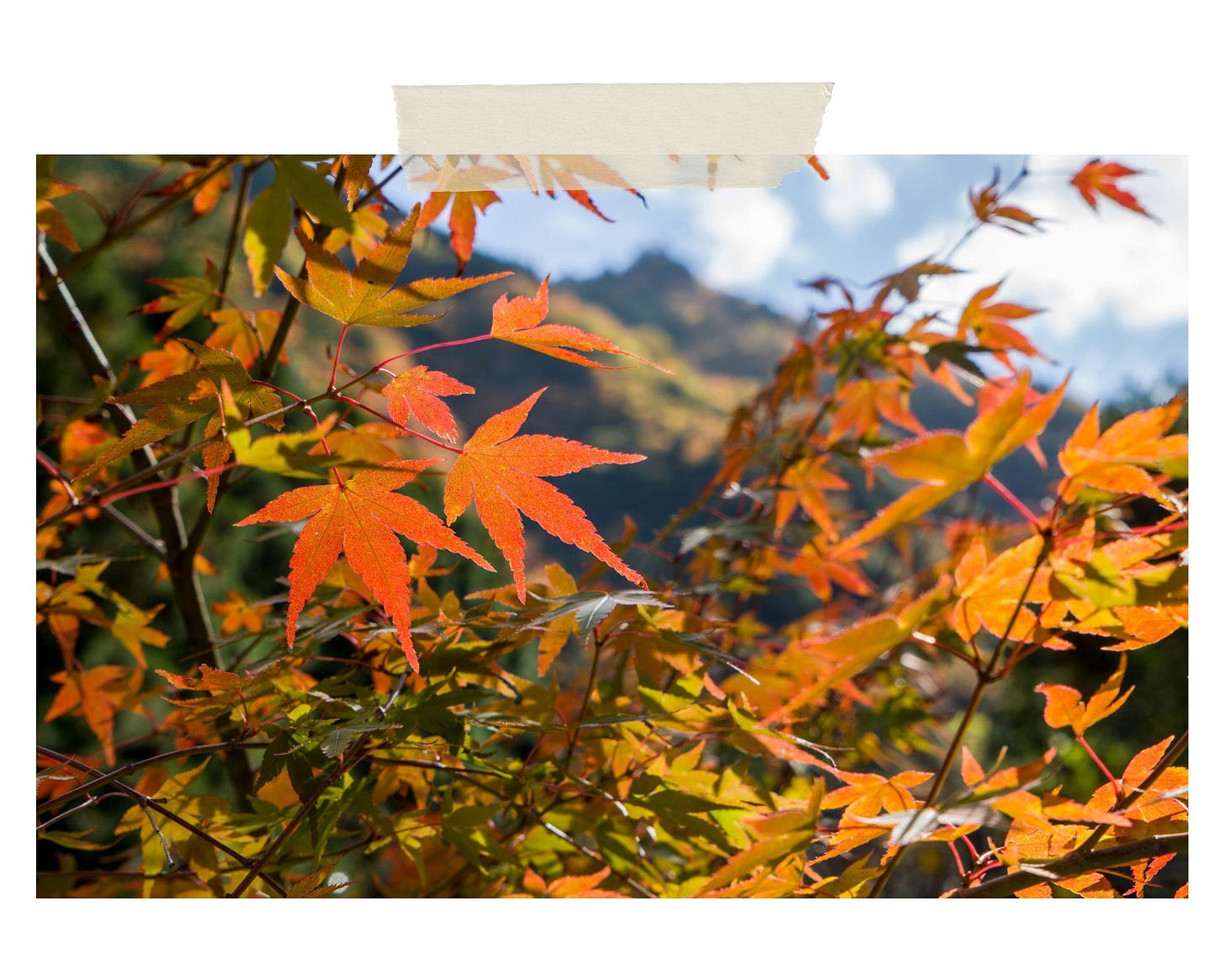
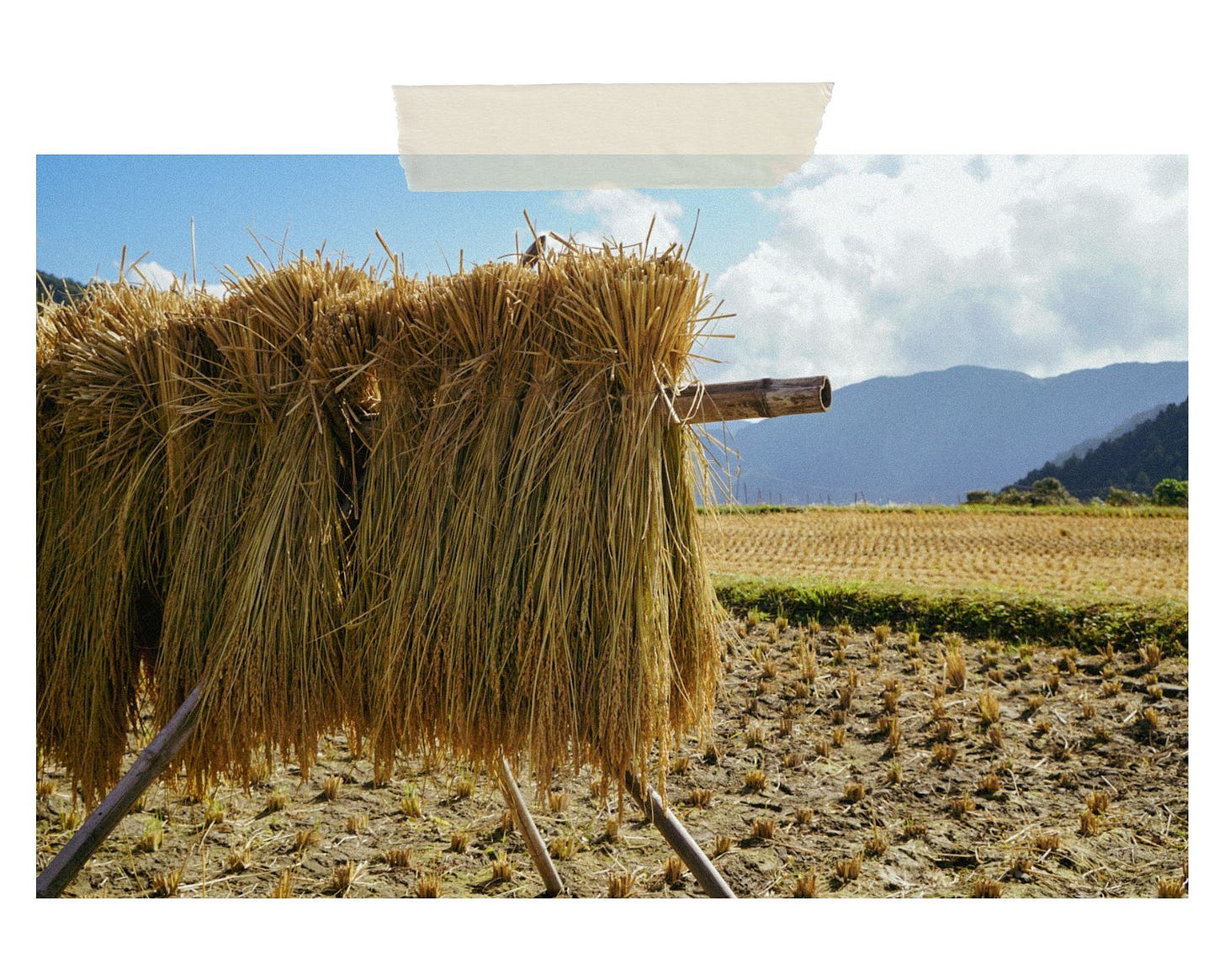
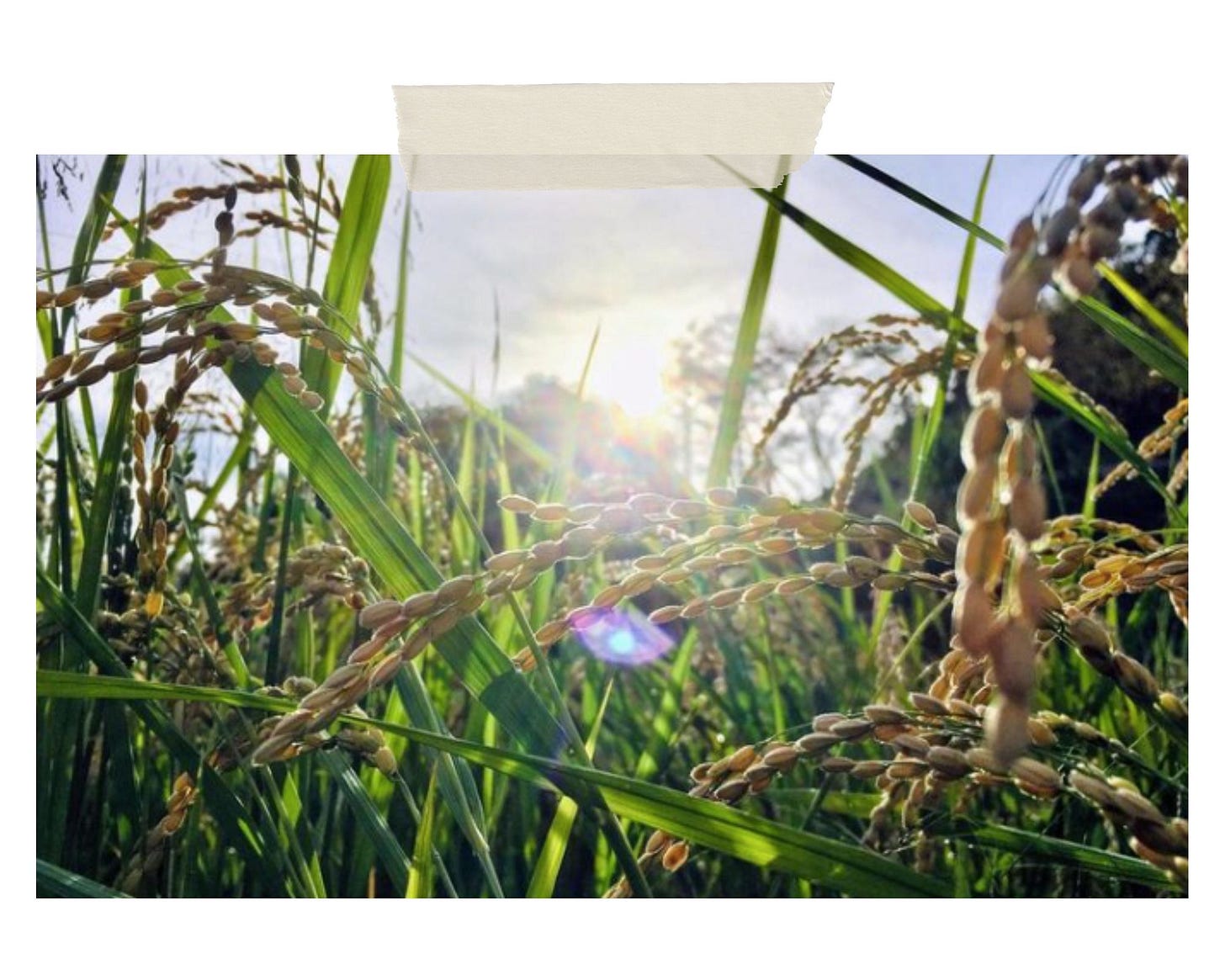
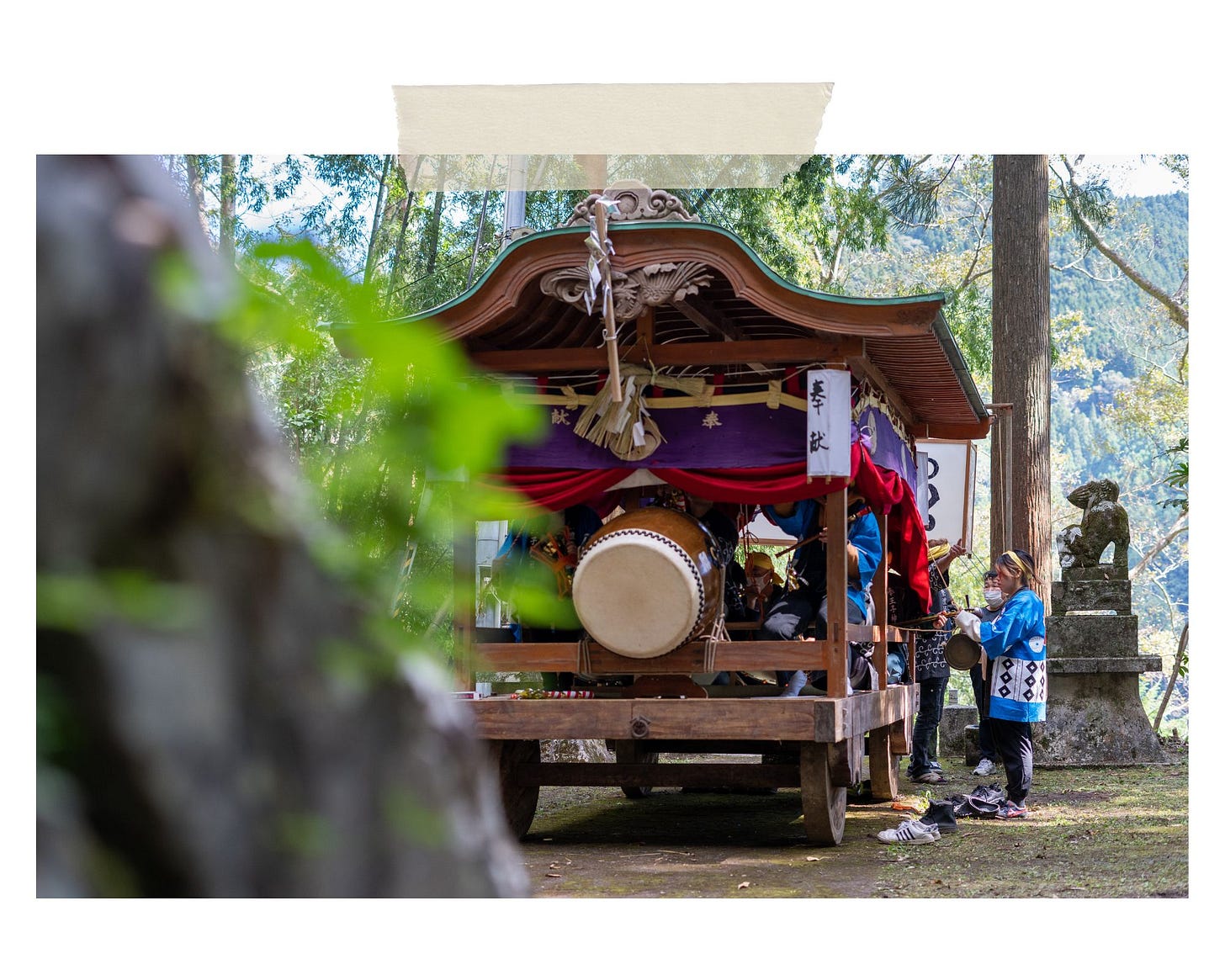
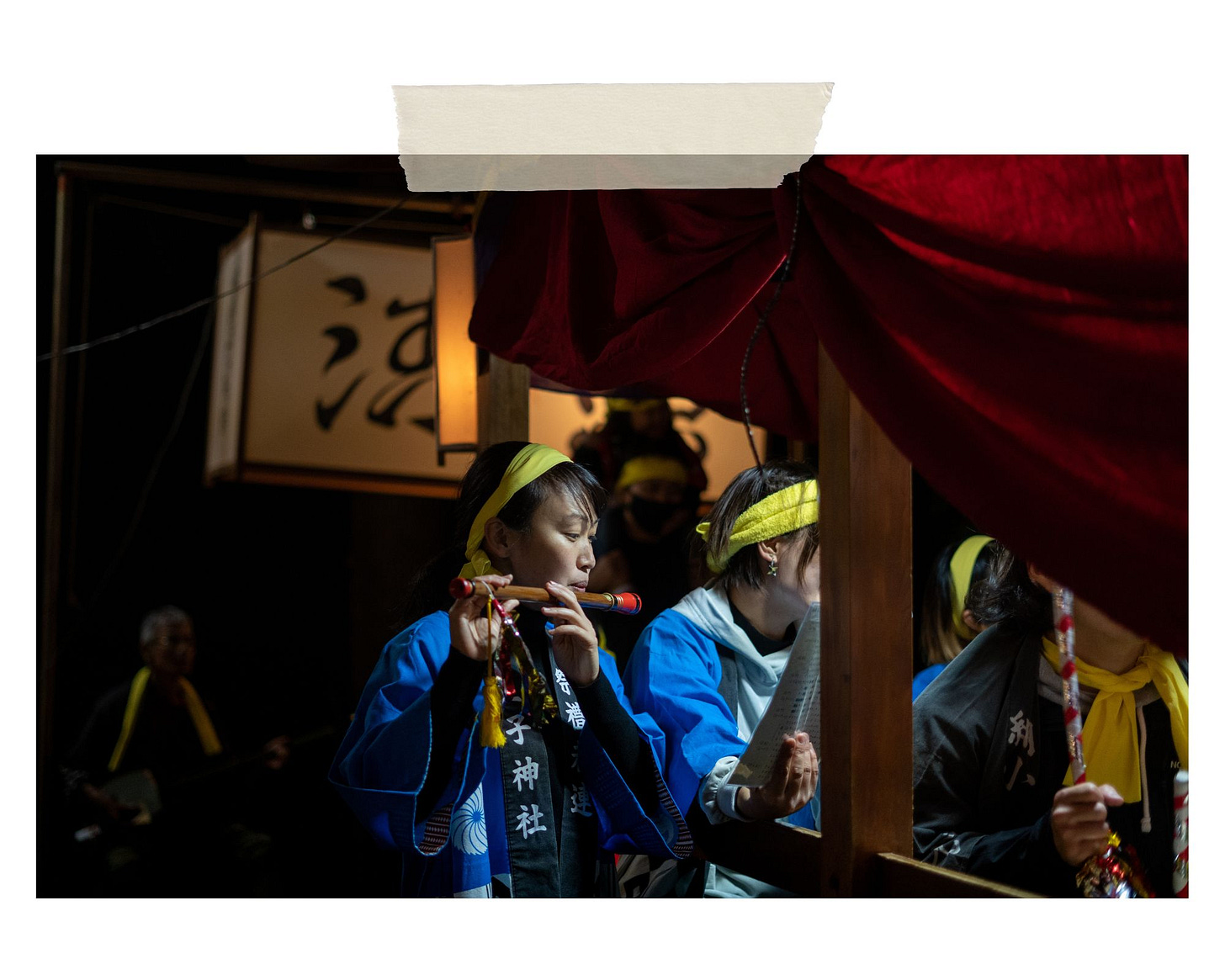
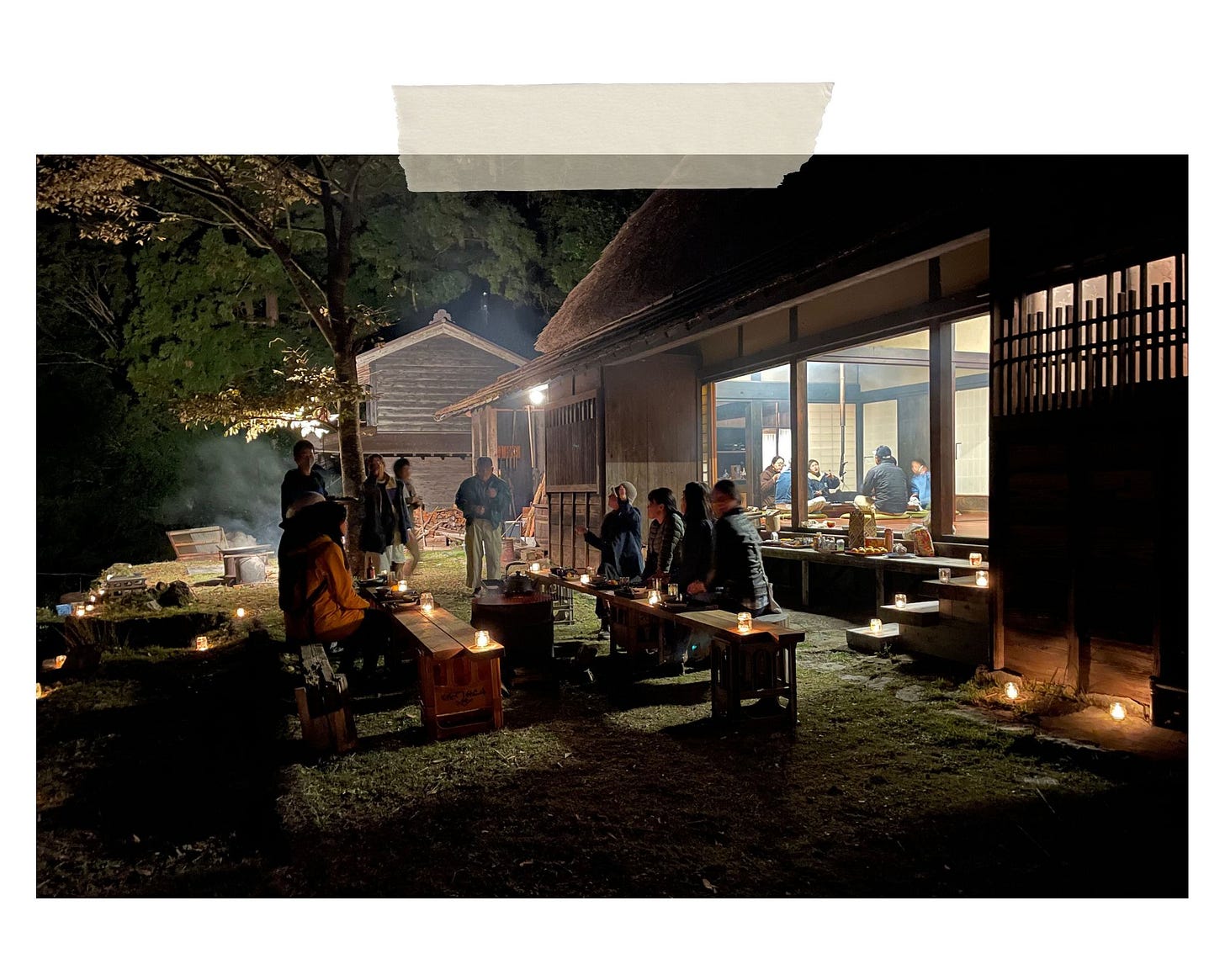

I absolutely love this framing of gratitude you describe. The rice is just now being harvested in South Korea too. Here, instead of the hanging bundles you describe, the stalks mostly seem to be laid on their side in square piles - making the entire landscape look like many golden patchwork quilts. Thanks for sharing!
My mother is from Iwate and is from a rural farming family in Japan.
Rice paddies surround their homestead and I have many memories of driving past the rice drying or watching the manual planting of the rice blades, one by one.
Thanks for taking me down memory lane.